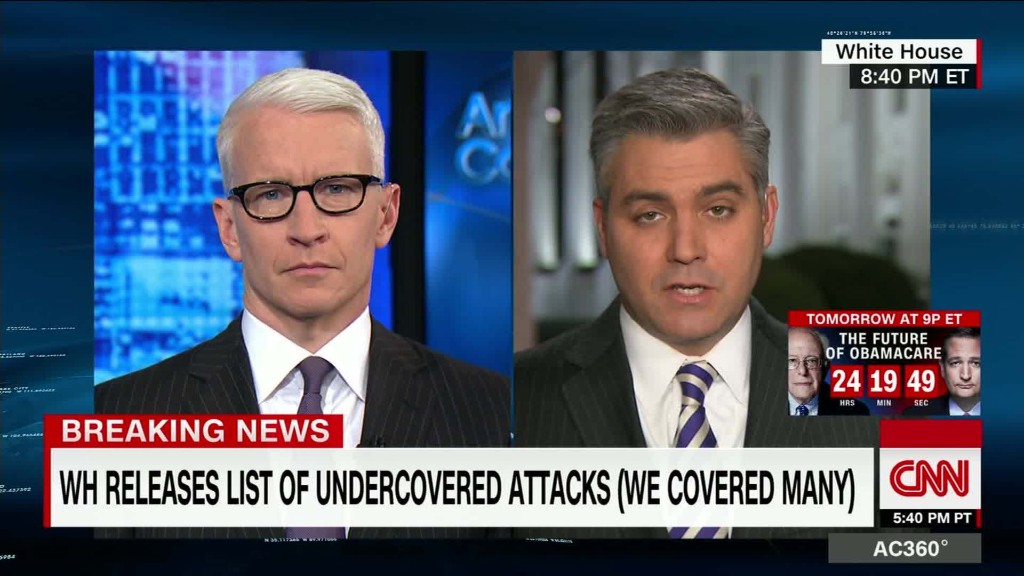
For the second day in a row, President Trump has suggested that the national news media suppresses bad news about violence. He has implied that this is for ideological reasons.
He was wrong on both occasions.
What he said Tuesday was about the murder rate in America. He pointed his finger at the camera crews in the back of the room at a White House event and said "the press doesn't tell it like it is" -- then went on to literally not tell it like it is.
Trump said that "the murder rate in our country is the highest it's been in 47 years, right? Did you know that? 47 years."
As CNN's Jeremy Diamond explained after Trump's remarks, the U.S. murder rate "isn't even close to such record highs."
There was a significant increase in the murder rate between 2014 and 2015. So Trump would be right to cite a record increase year-over-year. But the figure remains at a historically low level. The murder rate was much higher 47 years ago, in the 1970's, and was also higher in the 1980s and 1990s.
Trump made similar claims about the murder rate when he was campaigning last year. The claims were repeatedly fact-checked and debunked, to the point where they must now be called a lie -- there is simply no way at this point that Trump and his staff do not know that what he is saying is not true, but he keeps saying it anyway.
It came up again on Tuesday when Trump was speaking with law enforcement officials who had been invited to the White House. A small group of reporters were brought in to see part of the meeting.
Trump seemed to react to the presence of the cameras. He cited the murder rate, falsely claimed that it is at a 47-year high, then said, "it wasn't to their advantage to say that."
"They," members of the news media, might quibble with Trump's conspiratorial thinking.
They know that crimes are daily headlines in newspapers and on newscasts all across the country.
In fact, media critics frequently argue that some newsrooms, especially at local TV stations, spend too much time covering violent crime, thereby over-blowing the threat. The old newsroom adage "if it bleeds it leads" is often cited as a problem.
Trump had made a similar false accusation about the media on Monday. Then, he declared that the media isn't reporting on terror attacks in Europe, saying, "It's gotten to a point where it's not even being reported. And in many cases, the very, very dishonest press doesn't want to report it. They have their reasons, and you understand that."
Then, too, Trump was wrong. A list of attacks the White House put out to support the president's claim included a number of the most high-profile attacks over the past two years, including the ones in Paris, Orlando and San Bernardino, all of which were covered extensively by the press when they happened.
The connective tissue between the two false claims is a conspiratorial suggestion that journalists are involved in a coverup.
There are no shortage of media critics who can point out shortcomings about national news coverage. But that requires nuance, not sweeping misstatements meant to delegitimize all news coverage.


